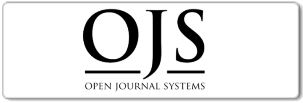SK JENIS DAN KERAGAMAN TUNGAU YANG MENGINFESTASI CICAK GEKKONIDAE DI CILACAP DAN WONOSOBO
Abstract
Kondisi geografis pada ketinggian wilayah di bawah 100 m di atas permukaan air laut (dpl) seperti di Cilacap dan di atas 1.000 m dpl seperti di Wonosobo, kemungkinan merupakan faktor yang menentukan jenis dan keragaman tungau yang menginfestasi cicak Gekkonidae. Tujuan penelitian adalah mengetahui jenis cicak, tungau dan keragaman tungau yang menginfestasi cicak Gekkonidae di Cilacap dan Wonosobo. Metode penelitian yang dilakukan adalah survai dengan teknik pengambilan sampel acak. Sampel berupa cicak Gekkonidae yang diperoleh diawetkan dalam alkohol 70%, dan disimpan terpisah berdasarkan spesies dan lokasi penangkapan. Selanjutnya cicak di bawa ke laboratorium Entomologi-Parasitologi untuk diidentifikasi dan diisolasi tungau yang menginfestasi menggunakan jarum preparat. Tungau yang diperoleh diidentifikasi setelah melalui serangkaian proses preparasi, maturasi dan mounting. Hasil penelitian baik di Cilacap maupun Wonosobo diperoleh 4 jenis cicak Gekkonidae yaitu Hemidactylus frenatus, H. platyurus, H. garnotii, dan Gehyra mutilate. Tungau yang menginfestasi cicak Gekkonidae meliputi 5 spesies yaitu Geckobia keegani, G. turkestana, G. simplex, G. gleadovania dan G. diversipilis. Hasil penelitian juga menunjukkan bahwa keragaman tungau yang menginfestasi cicak Gekkonidae di Cilacap (H’ = 1,052) lebih tinggi dibandingkan di Wonosobo (H’ = 0,815). Berdasarkan nilai evenness (E) diketahui bahwa tungau yang menginfestasi cicak Gekkonidae di Cilacap lebih mengelompok (E = 0,759) dibandingkan di Wonosobo yang cenderung menyebar secara teratur (E = 0,588).
References
Borroto-Paez R, Reyes Pérez D. 2022. Record number of mites, Geckobia hemidactyli (Pterygosomatidae), on a Tropical House Gecko (Hemidactylus mabouia) in Cuba. Reptiles Amphib, 29(1), 290–293. DOI:10.17161/randa.v29i1.17058
Budianto BH, Basuki E. 2021. Species and prevalence of parasitic mites on tree geckos in Purwokerto, Central Java. IOP Conf Ser: Earth Environ Sci, 948(1). DOI 10.1088/1755-1315/948/1/012007
Coates A, Barnett LK, Hoskin C, Phillips BL. 2017. Living on the edge: Parasite prevalence changes dramatically across a range edge in an invasive gecko. Am Nat, 189(2), 178–183. DOI: 10.1086/689820
Comas M. 2020. Body condition, sex and elevation in relation to mite parasitism in a high mountain gecko. J Zool, 310(4), 298–305. DOI:10.1111/jzo.12751
Díaz JA, Torres RA, Paternina LE, Santana DJ, Miranda, RJ. 2020. Traveling with an invader: ectoparasitic mites of Hemidactylus frenatus (Squamata: Gekkonidae) in Colombia. Cuad Herpetol, 34(1), 79–82. DOI: 10.31017/cdh.2020.(2019-027)
Fajfer M. 2018. New Species and Records of Scale Mites (Acariformes: Pterygosomatidae) from Geckos (Squamata: Gekkonidae and Caprodactylidae). BioMed Res Int, 2018, 1–9. DOI: 10.1155/2018/9290308
Fajfer M, Karanth P. 2022. New Morphological and Molecular Data Reveal an Underestimation of Species Diversity of Mites of the Genus Geckobia (Acariformes: Pterygosomatidae) in India. Divers, 14(12). DOI:10.3390/d14121064
Iturriaga M, Marrero R. 2013. Feeding ecology of the Tropical House Gecko Hemidactylus mabouia (Sauria: Gekkonidae) during the dry season in Havana, Cuba. Herpetol Notes, 6(1), 11–17.
Jacinavicius F de C, Bassini-Silva R, Oda FH, Kaiser H. 2021. New records of the mites Geckobia bataviensis Vitzthum, 1926 and Pterygosoma dracoensis Jack, 1962 (Trombidiformes: Pterygosomatidae) from Timor-Leste. Entomol Com, 3, ec03041. DOI: 10.37486/2675-1305.ec03041
Lobón-Rovira J, Conradie W, Iglesias DB, Ernst R, Veríssimo L, Baptista N, Pinto PV. 2021. Between sand, rocks and branches: An integrative taxonomic revision of Angolan Hemidactylus goldfuss, 1820, with description of four new species. Vertebr Zool, 71, 465–501. DOI:10.3897/VZ.71.E64781
Machado IB, Gazêta GS, José Pérez Z, Cunha R, De Giupponi APL. 2019. Two new species of the genus Geckobia Mégnin, 1878 (Acariformes, Prostigmata, Pterygosomatidae) from Peru. Zootaxa, 4657(2), 333–351. DOI: 10.11646/zootaxa.4657.2.6
Mahagedara P, Rajakaruna R. 2015. Parasites of two co-occurring house gecko species, Hemidactylus frenatus and Gehyra mutilata from Central Sri Lanka. Vingnanam J Sci, 11(1), 32. DOI: 10.4038/vingnanam.v11i1.4114
Mockett S. 2017. A review of the parasitic mites of New Zealand skinks and geckos with new host records. N Z J Zool, 44(1), 39–48. DOI: 10.1080/03014223.2016.1250786
Mohan AV. 2020. An update to species distribution records of geckos (Reptilia: Squamata: Gekkonidae) on the andaman and nicobar islands, bay of bengal. Herpetol Notes, 13(August), 631–637.
Paredes-León R, Cuervo-Pineda N, Pérez TM. 2013. Pterygosomatid mites from Cuba, with the description of a new species of Bertrandiella (Acari: Prostigmata: Pterygosomatidae). Rev Mex Biodivers, 84(4), 1142–1152. DOI: 10.7550/rmb.36498
Prawasti TS, Farajallah A, & Raffiudin R I K A. 2013. Three Species of Ectoparasite Mites (Acari: Pterygosomatidae) Infested Geckos in Indonesia. Hayati, 20(2), 80–88. DOI: 10.4308/hjb.20.2.80
Russell AP, Gamble T. 2019. Evolution of the Gekkotan Adhesive System: Does Digit Anatomy Point to One or More Origins? Integr Comp Biol, 59(1), 131–147. DOI: 10.1093/icb/icz006
Setiadi AE, Rahayu HM. 2021. Reptiles in the Pontianak and Kubu Raya residental area, West Kalimantan, Indonesia. Biodiversitas, 22(7), 2763–2770. DOI: 10.13057/biodiv/d220725
Singh B. 2016. Habitat Preference Of Tokay Gecko (Gekko gecko) In Barak Valley Of Assam, India. J Bioresour 3(1): 53-59 (2016)
Weterings R, Vetter KC. 2018. Invasive house geckos (Hemidactylus spp.): Their current, potential and future distribution. Curr Zool, 64(5), 559–573. DOI: 10.1093/cz/zox052

This work is licensed under a Creative Commons Attribution 4.0 International License.







